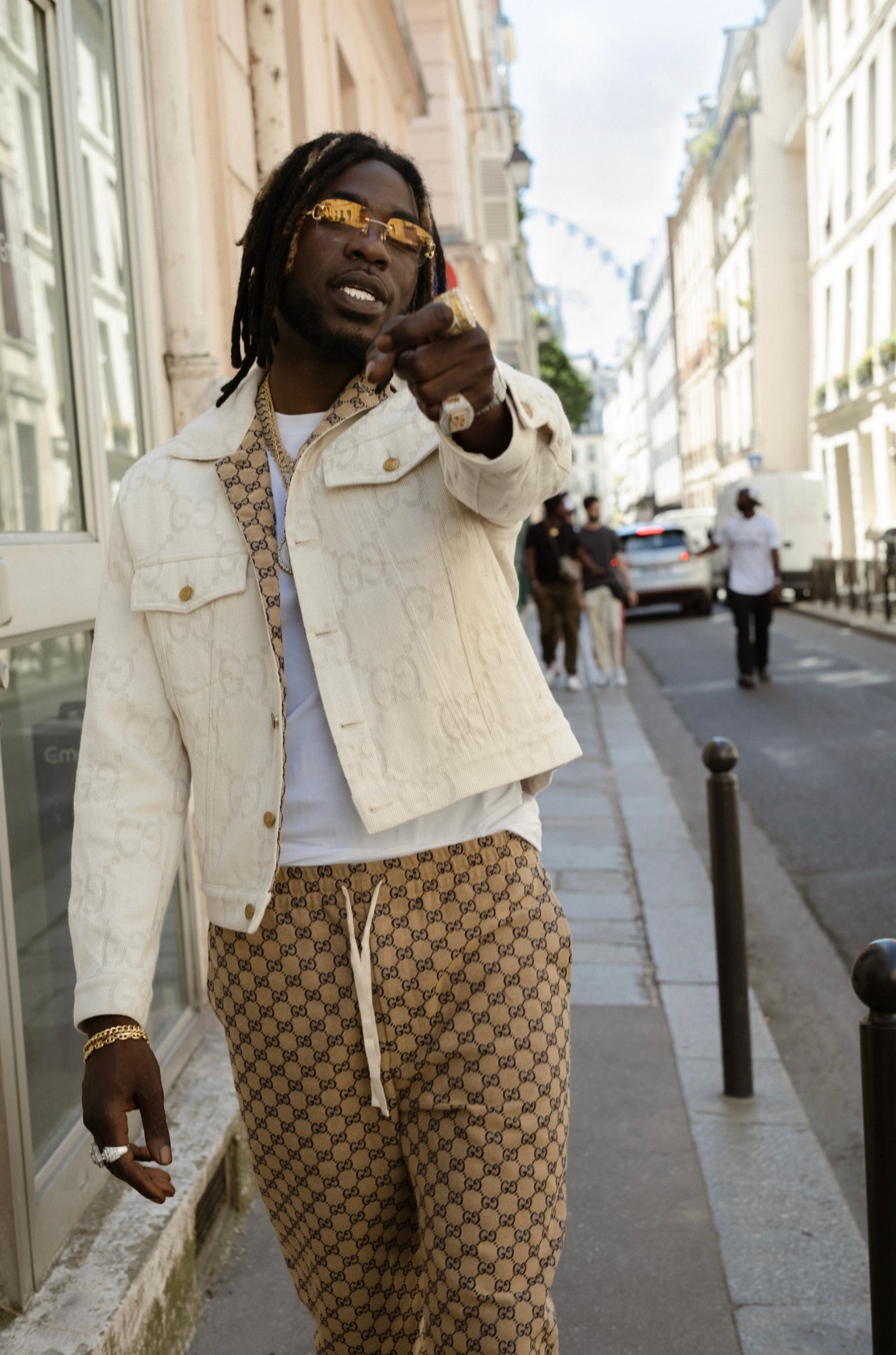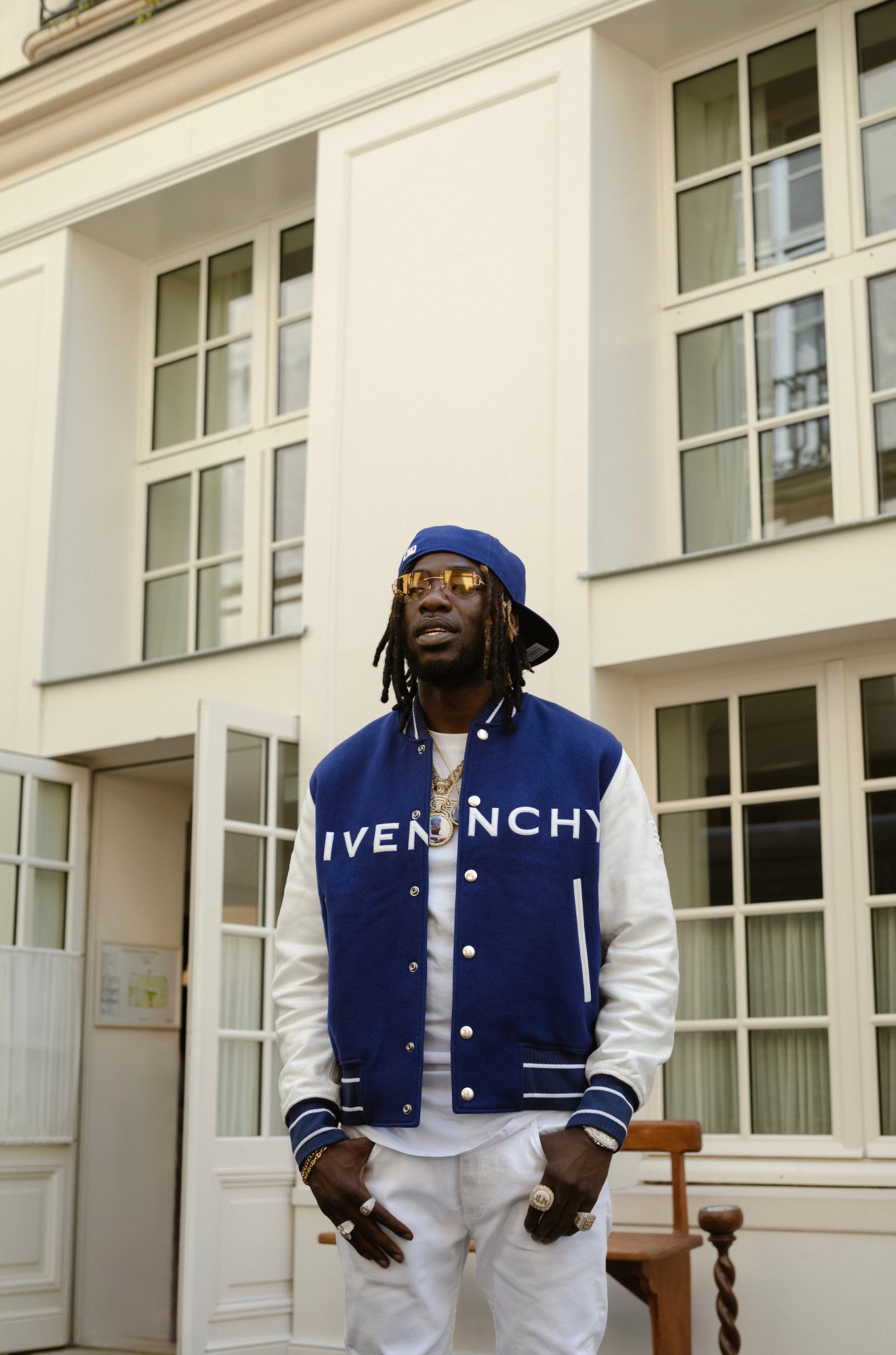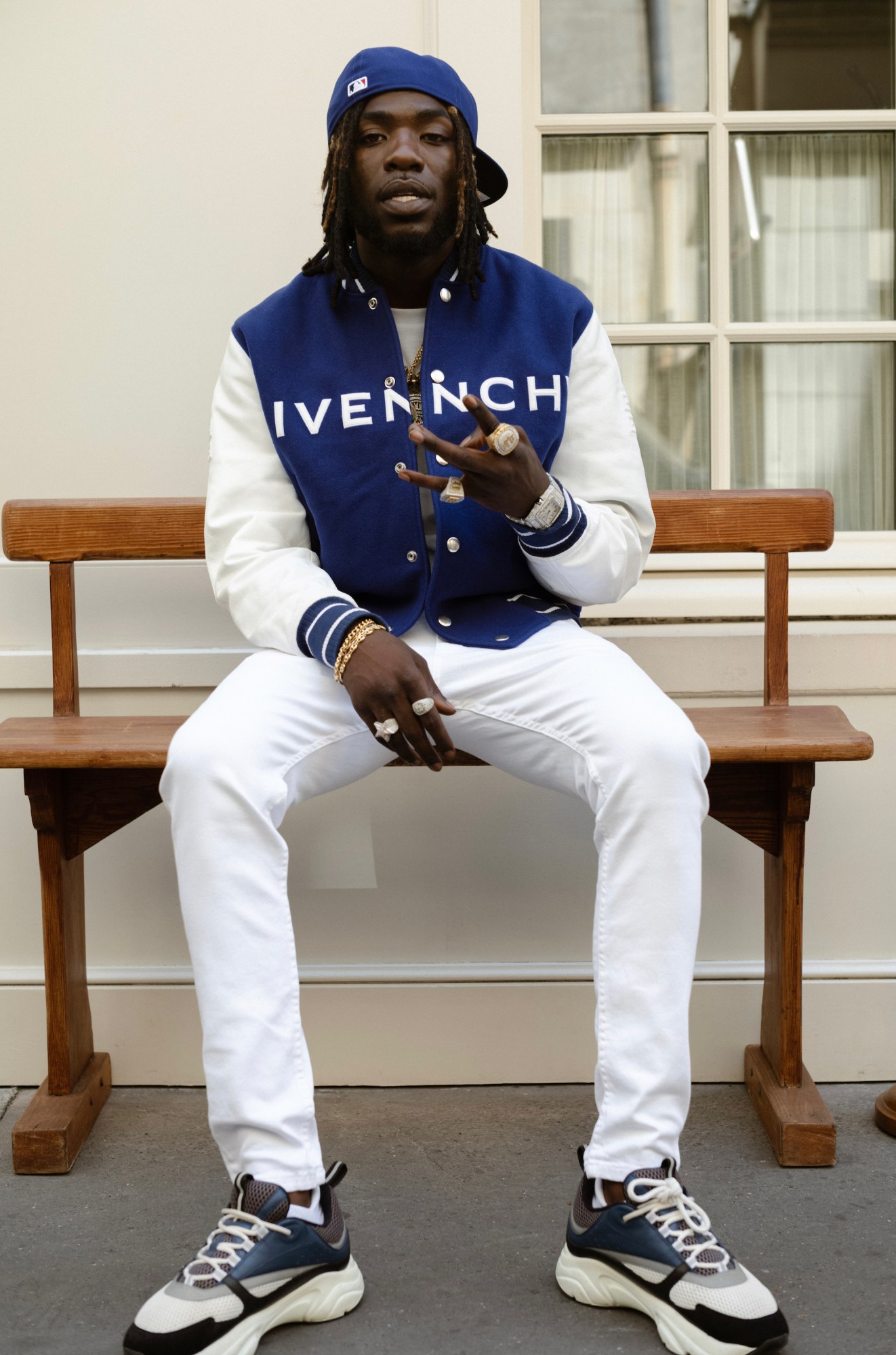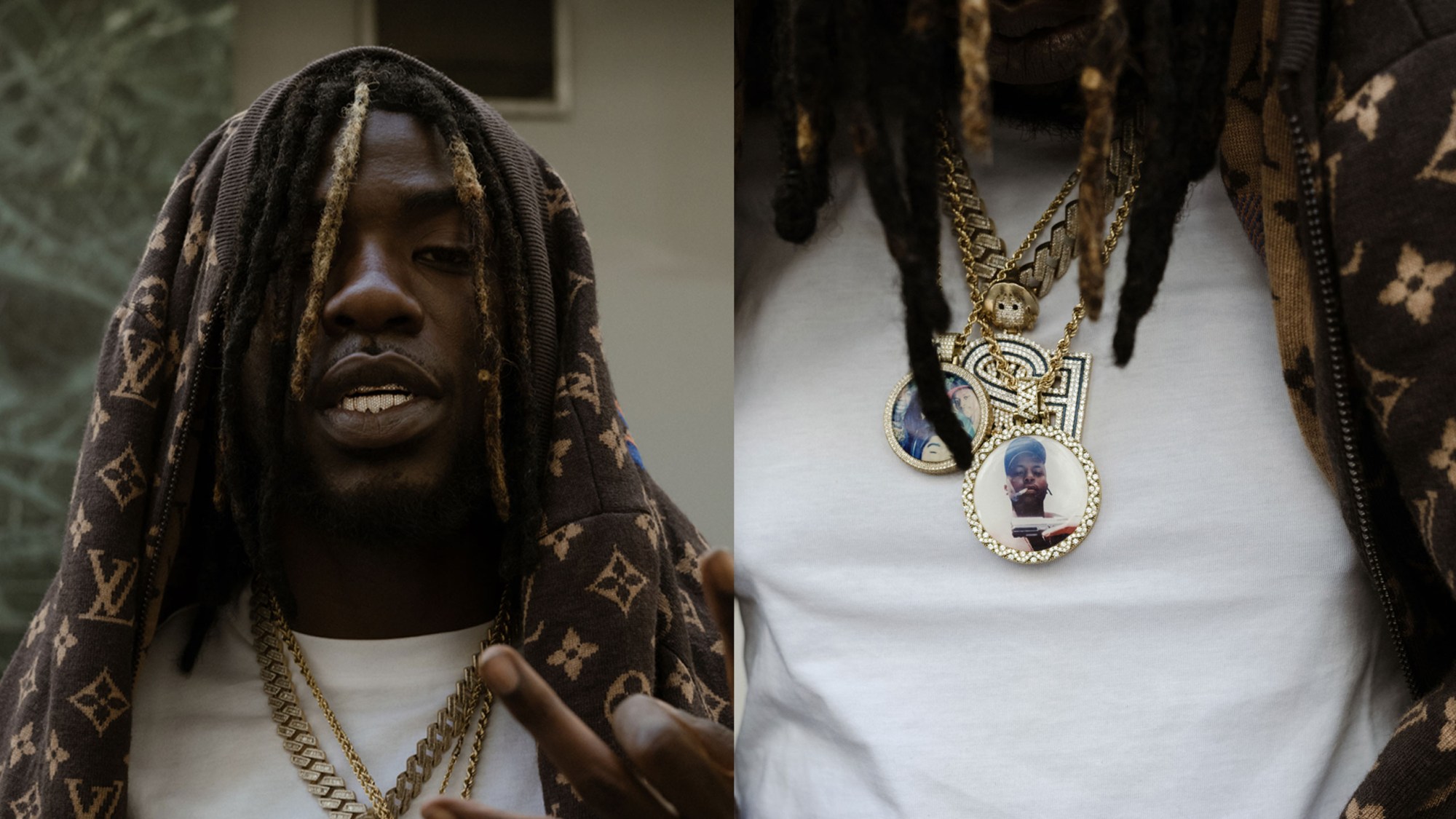This story originally appeared on i-D France.
For as long as he can remember, Gazo has been fascinated by the pyramids: their grandeur, the mythology behind them. His interest began in a fairly childlike way – not surprising since he first learned of them in history class. But in time, the Parisian rapper began to consider the vast constructions on a deeper level, perceiving a link between the pyramids and his own life. “Nowadays, we still wonder how they got there, how humans were able to build that kind of structure back then,” the 27-year-old tells us. “And I think some people look at me the same way. They wonder how I managed to break through; they wonder about my success, what my strategies have been.” This kind of attention on his career is only likely to increase with the release of Gazo’s new mixtape, KMT, which dropped last month. Its name is an abbreviation of “kemet”, which in turn derives from the name the ancient Egyptians gave their country, then considered “black earth”.
While working on the project, Gazo headed for Egypt with his team, including photographer Fifou, who was tasked with documenting the voyage. The trip lasted only a week, but it made a deep impression on the musician, who recalls it being an “incredible time” and a “necessary experience”. He watched the pyramids for hours, confronting existential thoughts as he contemplated the structures that hold so many stories, not to mention theories about their origins. “That said, I didn’t want to go inside,” admits Gazo with a laugh, “because when it comes down to it, they’re huge tombs. You hear all kinds of stories about curses and stuff — I’m not quite that curious.” Like many artists, the rapper claims he’s not entirely comfortable being interviewed, that he prefers to be private rather than unleash his feelings. “On a day-to-day basis, I’d say I’m a pretty reserved person with people I don’t know,” he says, noting that he’s “too authentic to be able to pretend.”

That said, Gazo appears to have enormous self-control — in his interviews and his music alike. KMT is his second full-length project, yet we’ve learned very little about the man behind the music. We know he was born in 1994 as Ibrahima Diakité, the youngest of five kids. Bursting with restlessness, Ibrahima lived on the legal and economic fringes of society, hopping between foster families and squats. He ended up channelling his frustrated energy into music, though he never delves much into the details of a life he describes simply as ‘special’. “I don’t share much about myself. And what I do share, I tell in a fairly vague way,” Gazo says. “I don’t want to say everything I have to say in my early albums. I want to set aside some material for later. I want to beat around the bush a little, save some stories for other projects. The idea is, at the end of my career, people will feel like they know me about 80%.”
After racing to the forefront of the rap scene with his series of freestyles in late 2019 (the chart-topping Drill FR), not to mention the banger recorded with fellow French rapper Freeze Corleone (“Drill FR4”), Gazo has seen his audience grow considerably. He’s no longer satisfied with rapping “for people who only care about drill”, declaring that he has to broaden his range if he wants to keep killing it. He also plans to try his hand at more melodic offerings, “for my female fans — there are more of them all the time”.

From the start, KMT was conceived as a mixtape with something for everyone. There are guest features (Damso, Ninho and Tiakola), reflections on love (“FLOWERS”), a violin solo (“DIE”), odes to life on the street (“HENNESSY”), and a strong link to the UK scene (“M.A.L.A” is a duet with the balaclava-wearing London rapper, M Huncho). There are other amazing collaborations as well — a particular standout being “GRA GRA BOOM” with Skread. “This song came to life at a point when we were having trouble finding a studio,” he explains. “Ablaye and Skread ended up lending us theirs. I’d see Skread working on different projects, and one day I asked him if he could do one with me. That’s what led to ‘GRA GRA BOOM’ – it really symbolises people’s kindness. There are some people who work in the shadows, but the work they do is really important.”
With a demanding shooting schedule and weeks upon weeks of album promotion now almost behind him (plus videos with 10 of millions of views to show for it), Gazo insists that part of him would have preferred to remain behind the scenes too. That’s where he feels most at ease, where he writes his lyrics — sometimes after listening to the same instrumental for days on end. He knows that, at this point, he can never really escape the media circus. He’s become a star, a phenomenon. After his first album went platinum, he came to embody a new era of French rap; something evident on the radio, across Spotify playlists and even on TV. Fresh — the recent winner of New School, a Netflix talent show in which rappers compete for a €100,000 prize — draws openly from codes popularised by Gazo.
Which brings our conversation full circle, back to the pyramids that had such an impression on the artist. “When you look at the history of mankind, there was a before and an after the construction of the pyramids,” he explains. “And I don’t mean to be pretentious when I say this, but the same is true for Drill FR. There was a before and an after it in the history of French rap. I see what I’ve brought to the genre. I see my influence on other rappers, and I’m happy about it.” With KMT, though, Gazo refuses to simply return to the pyramids. Instead, he’s building a new wonder of the world.

Credits
Photography Ojoz
Thanks to Château Voltaire


